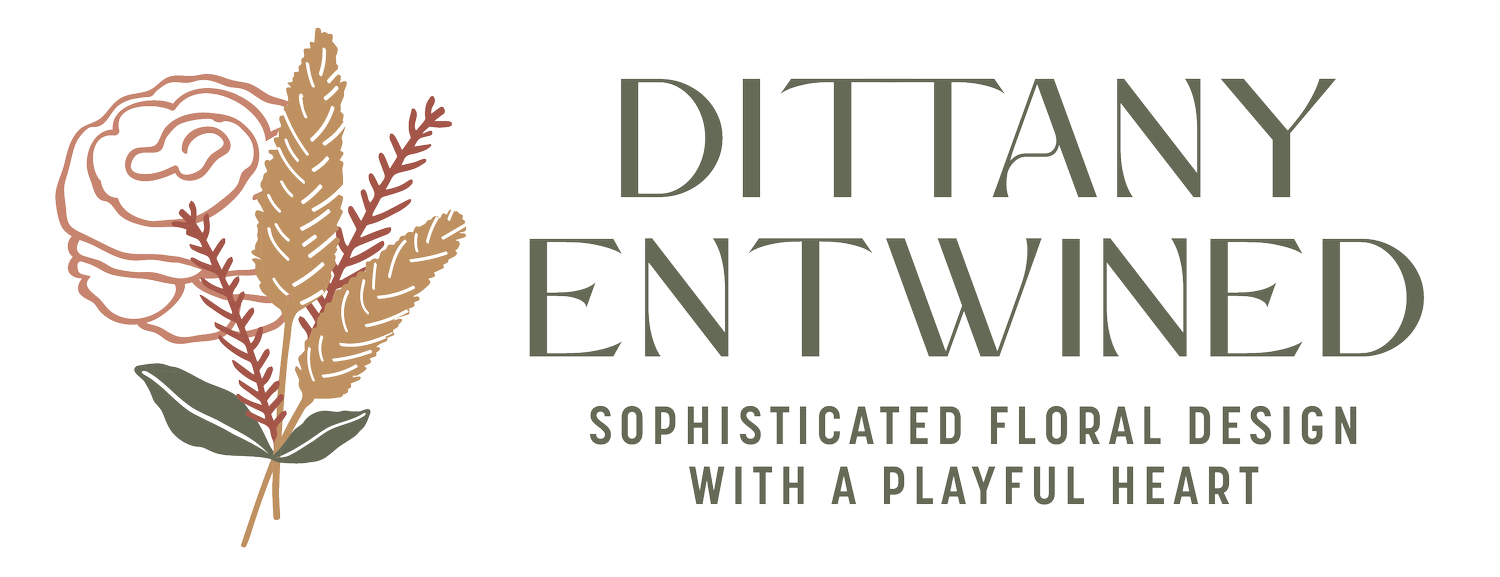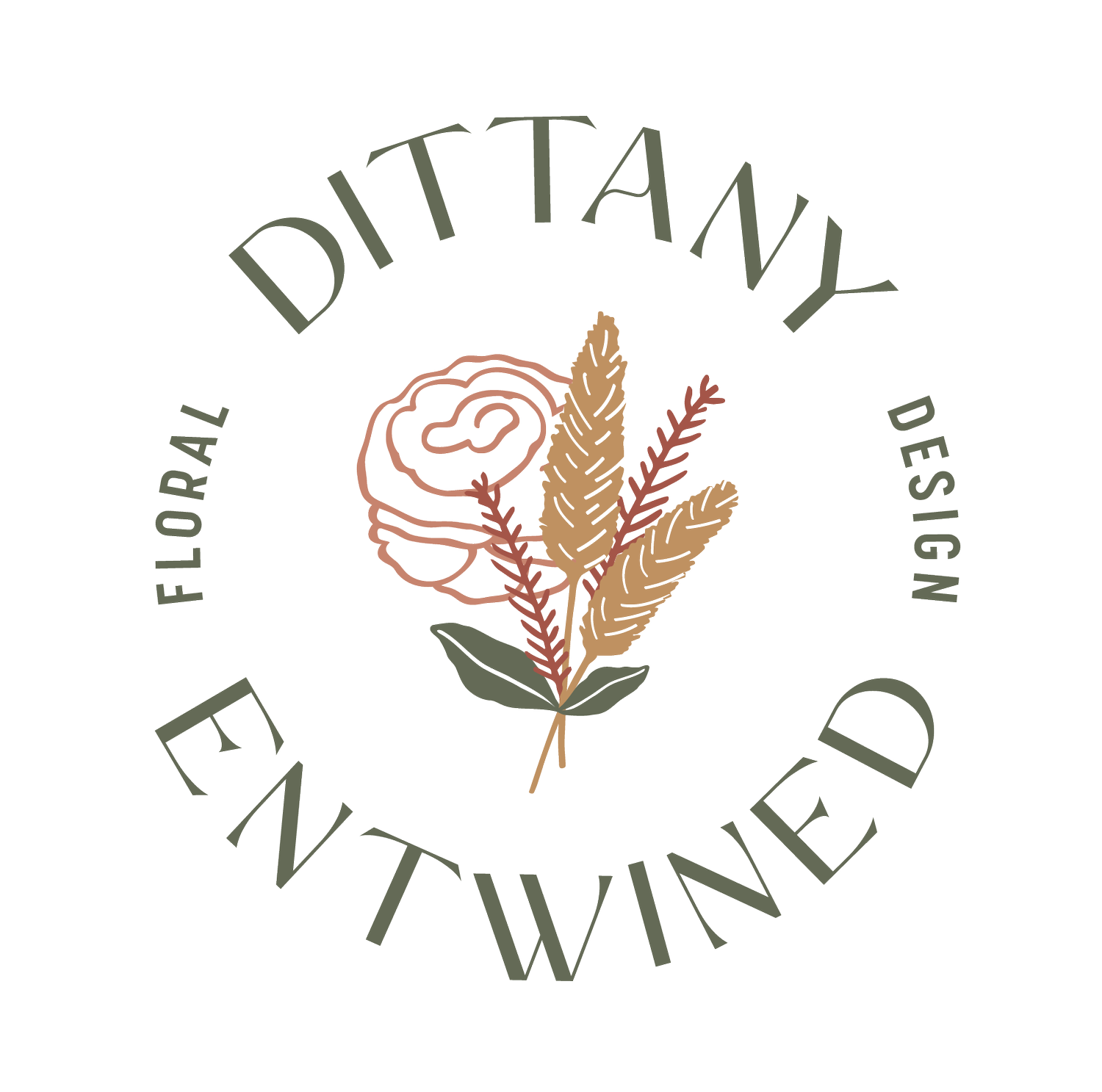A Couple’s Guide To Wedding Flower Installations
Image by Nicola Robson: Founder of Dittany Entwined Floral Design. Digital painting of a ceremony installation.
A Couple’s Guide To Wedding Flower Installations
Wedding flower installations can be one of the most impactful decor elements in a room, transforming a space through consideration of its architecture. There are many different types of installation, each of which come in a huge variety of styles and levels of extravagance. This couple’s guide will help you to understand the kinds of installations we work on at Dittany Entwined, and allow you to envision which may work for your own wedding.
Key Considerations For Wedding Flower Installations
Firstly, it’s important to qualify what an installation actually is and how it differs from an arrangement - the two are distinctly different, having unique effects on a space. For me, wedding flower installations are architectural floral designs that are created in place and remain there, and could only be created in that specific way by that specific person at that time. For example, aisle meadows that are then moved to fireplaces or the foot of your signage are arrangements, since they can be picked up and used in different spaces. Trailing ceiling florals or hanging foliage would count as an installation, because it is put in place and carefully curated to remain there throughout the day.
When working on floral installations for your wedding, the architecture of the room is the most important factor. Your flowers should complement and enhance your wedding venue, not detract from it or be swamped by its grandeur. Evenness and symmetry are key, as well as the purpose of the room and the flow of yourselves and your guests through and around it on your wedding day.
Wedding floral installations are synonymous with bespoke design, made completely from scratch for each couple in each space. When combined with my signature ‘just grown here’ style, this makes for statement features that showcase your style and vibe and have a big impact. They don’t always have to be large in size, but they often are - and, in the name of transparency, they generally require scale and budget to make them visually stunning and worthwhile.
Take a look at my recent blog exploring what ‘just grown here’ means for your wedding florals.
5 Types of Wedding Floral Installations
Archways
Floral wedding archways are eternally popular, probably because they come in so many different shapes and sizes and can be adapted for your budget. They range from full, continuous archways that stretch from the floor, all the way over your heads and back again on the other side, to broken archways that are more akin to a pair of columns asymmetrically meeting in the middle. They can be designed to be walked through or to frame a doorway, flowing with and mirroring the shape of the space around it.
Your decision about whether to have a fuller or broken archway comes down to a few things, not just budget. Sometimes a broken arch can look more organic where a full arch would be overpowering, so depending on your space you may choose one or the other. Take a look at this blog which shows different styles of archway and explains how small tweaks can affect the cost.
Some wedding flower installations that appear to be arches would actually be classified as arbours, especially those that sit at the end of the aisle and are designed to frame you during your ceremony, not to be walked through. I’ll get onto these in more detail in the aisles & altars section!
Browse my galleries to see various styles of archways I have designed for my couples.
Staircases
If your wedding venue has a focal staircase that you or your guests will be using, passing or posing with throughout the day, I highly recommend a wedding flower installation for it. It’s no secret that I absolutely love staircase florals - take a look at this Thicket Priory installation that was specifically designed to be walked through all weekend long.
Staircase floral installations need scale and budget in order to achieve that blended, all encompassing style for the structure. An urn on a plinth at the bottom of a staircase is an arrangement (a beautiful one!), but when the flowers creep and twist and melt into the stairs themselves, it becomes an installation. There is something really special about a blooming staircase, giving the feeling of walking into an enchanted wonderland or secret garden. It can feel truly experiential and will delight your guests.
Ceiling Installations
Ceiling wedding flower installations require experience, expert knowledge and careful consideration to make them safe, beautiful and long lasting. Taking into account the purpose of the room and your flow through it is a big factor here, thinking about your key touchpoints and which moments are the most important in order to decide on placement. Ceiling florals need to be impactful and generally involve bigger budgets, in part due to the extra production and larger scale we inevitably work on. For smaller budgets, it’s possible to retain that hanging effect by placing raised arrangements on tables to look as though they are floating or hovering.
It’s important to see what’s available and possible at your wedding venue, as not all will let you hang things from their existing ceiling structures or even at all. We usually like to use beams or similar solid features that are already in place, but if these aren’t present then we need to install extra mechanics to make it work. Once your ceiling installation is in, it can’t be moved!
Ceiling flower installations are more complex than their down-to-earth counterparts because we have to ensure they are safe and won’t fall down, carefully consider which types of flowers and foliage will look their best up there with limited water sources, and manage the weight and load - all while making it look visually stunning and effortless.
In your Proposal Of Dreams (more about that here) I’ll always outline what’s realistic and possible at your venue, giving you the most accurate representation of how things will turn out on the day.
Table Installations
Table florals come on such a spectrum of styles, aesthetic finishes and scales, and defining them as installations rather than arrangement lies in this distinction: if they can only be curated in the moment and never put back the same way twice, they are installations. If they can be picked up, moved about and rearranged, they are centrepieces or arrangements. Wedding flower installations on your tables don’t have to be large scale and structured to make a statement, they can also be delicate and organic and wild - my favourite way to work!
We can create something playful, dancing along the table and seemingly growing from it. One of my couples asked me for a modern art vibe with their table florals, so we are using little arrangements in small dishes but on an abundant scale - all together and curated, this will be an architectural arrangement that will have a huge impact.
Table floral installations have such potential, and the possibilities are exciting and endless.
Image by Safrina Smith Photography: An Intimate dining experience
Wedding floral installations have such power to ground you on your wedding day, keeping you in the moment and immersing you in an alchemic cloud of blooms. Read more about how the power of the senses influences my floral design, and get in touch to begin designing your own gorgeously sophisticated, luxuriously wild wedding flowers.















